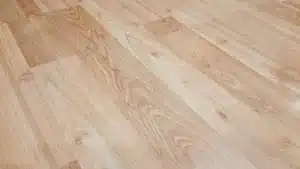When it comes to choosing best flooring options for humid climates like those found in Florida and Georgia, practicality and durability take center stage. The hot and humid weather prevalent in these regions can wreak havoc on certain types of flooring materials, causing warping, mold growth, and other damage. As such, selecting the right type of flooring becomes crucial to ensure your home remains beautiful and functional even in the most challenging environmental conditions.
The Challenges of Humid Climates
Before delving into the best flooring options for humid climates, it’s essential to understand the challenges that high humidity levels pose to flooring materials. Humidity can cause several issues:
- Warping and Expansion: Wood, laminate, and certain types of engineered flooring can absorb moisture from the air, causing them to expand, warp, or buckle.
- Mold and Mildew Growth: Excess moisture can lead to the growth of mold and mildew, not only causing an unpleasant appearance but also posing health risks to inhabitants.
- Cupping and Crowning: Solid hardwood flooring is particularly susceptible to cupping (when edges of the boards rise) and crowning (when the center of the boards rises) due to uneven moisture exposure.
- Staining and Discoloration: Humidity can cause certain flooring materials to stain or become discolored over time.
 Considering these challenges, it’s important to choose flooring materials that are specifically designed to withstand high levels of humidity and temperature fluctuations.
Considering these challenges, it’s important to choose flooring materials that are specifically designed to withstand high levels of humidity and temperature fluctuations.
Best Flooring Options for Humid Climates:
- Porcelain or Ceramic Tile: Porcelain and ceramic tiles are excellent choices for humid climates. They are not only moisture-resistant but also versatile and stylish. Tiles are highly durable and can mimic the look of natural stone or wood without the susceptibility to moisture-related issues. They are also easy to clean, making them ideal for areas prone to spills and humidity.
- Luxury Vinyl Plank (LVP) and Luxury Vinyl Tile (LVT): Luxury vinyl flooring has gained immense popularity in recent years, and for good reason. LVP and LVT offer a wide range of styles and patterns, including options that resemble hardwood, stone, and tile. These materials are highly resilient to moisture, making them perfect for humid climates. They are also comfortable underfoot and can mimic the appearance of more delicate flooring materials without the associated drawbacks.
- Concrete Flooring: Concrete floors are an increasingly popular choice, especially for contemporary and industrial-style homes. Sealed concrete is highly resistant to moisture and provides a sleek, minimalist look. It can be stained or stamped to resemble other flooring materials while maintaining its durability and resistance to humidity.
- Natural Stone: While natural stone flooring can be more expensive, it’s an elegant and durable choice for humid climates. Options like slate, travertine, and granite are less prone to moisture-related issues and can add a touch of luxury to your home.
- Engineered Hardwood Flooring: Unlike solid hardwood, engineered hardwood flooring is constructed with layers that provide added stability. This makes it more resistant to moisture-related problems, although it’s still crucial to choose a high-quality product and maintain proper care to prevent any issues.
- Bamboo Flooring: Bamboo is an eco-friendly alternative to hardwood and offers good resistance to humidity. It’s important to note that not all bamboo flooring is created equal; choose strand-woven bamboo or other types that have been treated for moisture resistance.
- Outdoor Decking Materials: If you’re looking for flooring options for outdoor spaces like patios, decks, or balconies, consider materials designed for outdoor use. Tropical hardwoods like ipe and tigerwood, as well as composite decking, are engineered to withstand the elements, making them suitable for humid climates.
Installation and Maintenance Tips:
- Proper Subfloor Preparation: Ensuring a proper subfloor is essential to prevent moisture from seeping into your flooring. A moisture barrier or appropriate underlayment can help prevent issues down the line.
- Regular Cleaning and Maintenance: Regardless of the type of flooring you choose, regular cleaning and maintenance are key to preventing mold, mildew, and other moisture-related problems. Be sure to follow the manufacturer’s recommendations for cleaning and care.
- Invest in Dehumidification: In extremely humid environments, consider using dehumidifiers to maintain optimal indoor humidity levels. This can help preserve not only your flooring but also your overall indoor air quality.
Best Flooring Options for Humid Climates Conclusion:
In humid climates like those found in Florida and Georgia, choosing the right flooring materials can significantly impact the longevity and aesthetic appeal of your home. Porcelain or ceramic tiles, luxury vinyl flooring, concrete, natural stone, engineered hardwood, bamboo, and outdoor decking materials are among the top options that offer resilience against the challenges posed by high humidity levels. By selecting appropriate flooring and following proper installation and maintenance practices, you can ensure that your home remains comfortable, beautiful, and functional for years to come, no matter the climate.



